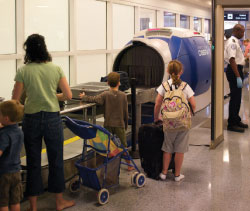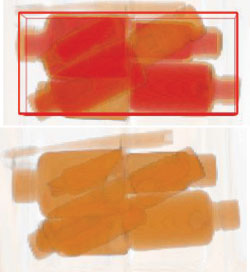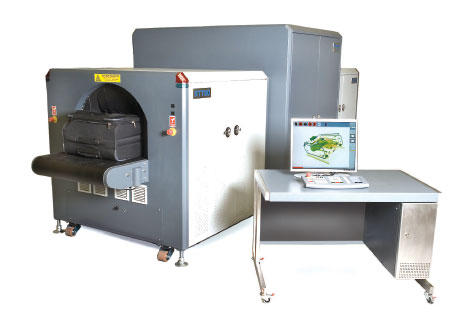
Analogic, whose CT-based automatic explosives detection system, the COBRA (carry-on baggage real time assessment) has been installed at US airports, is working towards a Type D standard through testing software at undisclosed airports as well as the TSA’s testing lab.
The EU’s ultimate aim for 2010 is to treat LAGs in a way that traditional explosive threats are treated, while the Transportation Security Administration (TSA) is looking to follow this process across US airports. Stephen Hogan, director, Government Affairs, Rapiscan Systems, explained that there has been a lot of input from the national authorities and the industry in drafting EU regulation and exploring the best way to deploy the technology. “Consideration is also being given to airports to allow them enough time to buy the software. It’ll be a transitional phase,” he said.
Manufacturers are continuing to trial and develop the technology with confidence that Type C technology will be certified by 2010, enabling advanced detection of threat and non-threat liquids over 100ml outside of the bag and in a separate tray. The bigger challenge ahead for manufacturers will be working towards achieving Type D certification – which would enable automatic detection of multiple liquid explosives inside the bag.
Philipp Kriegbaum, Fraport’s senior security co-ordinator and Vice-Chair of ACI EUROPE’s Security Committee, explained that there is some fear of confusion, where the EU aims to allow airports to choose which system they use. “As a large airport, we need Type D equipment, otherwise you need to implement additional screening, which would bring down our throughput. Harmonisation is an issue – the more the systems differ from each other, the more difficult it becomes for airports. “The EC’s theory does give more flexibility to airports for customised solutions, but with larger airports they don’t see that anything but Type D equipment will work. I don’t think Type D will be possible by April 2010,” he explained.
Advanced scanning technologies

Rapiscan is working towards Type D technology through testing its latest prototype – the RTT (Real Time Tomography) machine – a fully automated explosives detection system (EDS) which generates high-resolution 3D X-ray images of passenger baggage.
Rapiscan Systems has been part of the process for developing a liquids standard with the European regulatory bodies. Rapiscan’s liquids programme is primarily focused on its 620DV platform. The 620DV hardware is widely deployed by the TSA in the US, with its biggest deployment in Europe at Manchester airport. Type C certification would require an upgrade of the software rather than a replacement of the equipment. In addition, Rapiscan is working towards Type D technology on both its 620DV platform and through testing its latest prototype – the RTT (Real Time Tomography) machine – a fully automated explosives detection system (EDS) which generates high-resolution 3-D X-ray images of passenger baggage.
The RTT has spent three months in Manchester airport’s baggage hall and a further month at the train station concourse collecting data from thousands of passengers’ bags. Developed in collaboration with the University of Surrey, it represents a breakthrough over legacy CT baggage systems, explained Ken Mann, general manager, Rapiscan’s CXR division.
“The RTT can run at up to 1,800 bags per hour – higher than standard systems which will process 1,200 bags per hour. The benefits can be traded – by using less machines and operators you are able to process bags cheaper and more quickly.”
He added: “Regulators would look to see the detection bar raised and as you put liquids in a bag, the performance will inevitably degrade. There is a need to define what is acceptable and that bar has yet to be set, but with RTT we do a very good job of classifying liquids.”
However, as the performance of Type D technology is still unproven – particularly in a high throughput scenario, it is likely to be a long-term goal. “We need to take all the lessons we learnt from the trials and build them into the hardware to make further improvements. The software is continuing to develop better threat detection algorithms,” said Mann.

Rapiscan is working towards Type D technology through testing its latest prototype – the RTT (Real Time Tomography) machine – a fully automated explosives detection system (EDS) which generates high-resolution 3D X-ray images of passenger baggage.
Analogic, whose CT-based automatic explosives detection system, the COBRA (carry-on baggage real time assessment) has been installed at US airports, is also working towards a Type D standard through testing software at undisclosed airports as well as the TSA’s testing lab. Tim Krzyzanowski, Analogic’s vice president, global sales, explained: “In the US we are continuing to work with the TSA and are pushing the legislative bodies in Europe. We believe they should be focusing on detecting and not restricting. We are continuing to work on liquid detection algorithms with a high level of confidence that we will be able to achieve Type D requirements. All the data is there – it’s a matter of training the algorithms to detect the threat and the EU and industry recognise the challenges of this.”
The potential operational benefits will also need to be weighed up against cost for airports. “It will be expensive for airports to convert so it is likely to be a phased approach. The technology is still evolving and getting there cost efficiently will be a challenge as it will cost more than traditional machines,” said Krzyzanowski.
Rapiscan’s RTT could be used in a hold baggage application for business travellers willing to pay a premium to fast-track their way through security – an option which is also being considered and will make this more viable for airports, said Mann.







